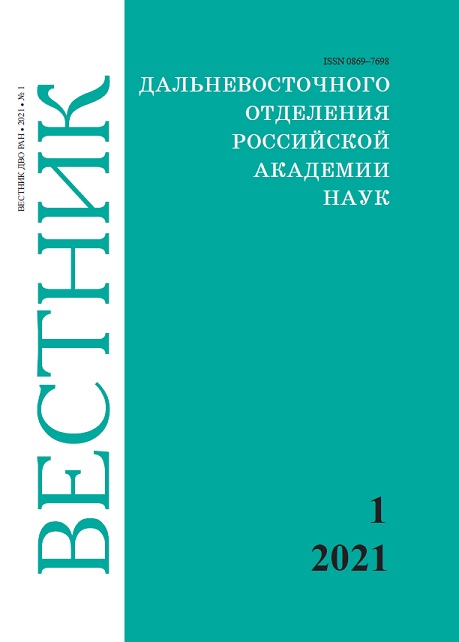Porosity, permeability and structure sea ice in the Novik Bay (the Russian Island) on base hydrological field research, MRT and CT. N.A. MEL’NICHENKO, A.V. TYUVEEV, A.Yu. LAZARYUK, E.V. KUSTOVA, A.S. ABRAMOV
Keywords:
sea ice, structure of ice, permeability, magnetic-resonance and computer tomographyAbstract
Porosity, permeability and structure sea ice in the Novik Bay (the Russian Island) on base hydrological field research, MRT and CT. N.A. MEL’NICHENKO1, A.V. TYUVEEV2, A.Yu. LAZARYUK3, E.V. KUSTOVA3, A.S. ABRAMOV1 (1Far Eastern Federal University, Vladivostok; 2Vladivostok State University of Economics and Service, Vladivostok; 3V.I. Il’ichev Pacific Oceanological Institute, FEB RAS, Vladivostok).
The results of studying the vertical structure of sea ice in the Amur Bay for the period from 2013 to 2020 according to magnetic resonance tomography (MRT) and X-ray computed tomography (CT) data, as well as the results of porosity calculations and hydrological measurements are presented. The characteristic differences in the structure of ice obtained by freezing sea water from the spatial structure of natural sea ice according to MRT images are noted. The characteristic features of the volumetric structure of channels and pores for ice formed under different weather conditions are indicated. The profiles of the effective ice permeability and the Rayleigh number were calculated from the data of temperature and salinity measurements in the ice. Rayleigh numbers turned out to be higher by 2 orders of magnitude than typical values for melting land fast ice in the Arctic regions within 150–470 in February and up to 11 000 in March. The ice permeability was also 1–2 orders of magnitude higher than the permeability of spring Arctic ice. The capabilities of computed tomography for determining the size of air bubbles in ice pores are shown.


